7 Tips on How to Survive Wild Animal Attacks
We live in a beautiful world teeming with wildlife – from majestic lions to playful cheetahs, but interacting with them isn’t always a walk in the park. Every year, stories of animal attacks make the headlines, sometimes with tragic consequences. So, let’s see how to survive wild animal attacks.
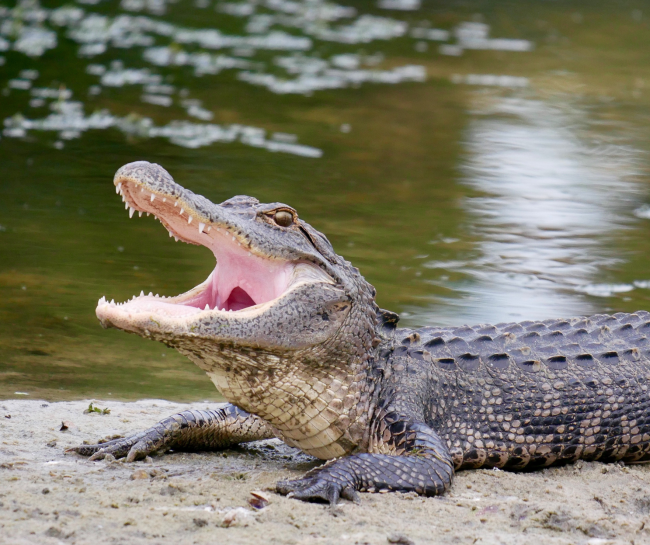
How to survive wild animal attacks: Tips and Prevention
From a lakeside alligator encounter to a surprise visit from a mountain lion, we’re going to teach you how to respond effectively and safely. The wild is calling, so buckle up and keep your wits about you!
1. How to avoid sharks

While it’s true that shark attacks are rising, with a record 98 cases reported worldwide in 2015, remember that they’re still incredibly rare.
Facing a shark in the wild blue ocean might sound like the stuff of nightmares, but don’t worry, we’ve got you covered!
First off, let’s avoid luring our toothy friends. Sharks have an incredibly keen sense of smell and can detect blood or urine from miles away. Also, avoid thrashing around in the water – it could make you look like a tasty treat. Some simple precautions can reduce your risk even further. Avoid swimming at dawn, dusk, or night and stay away from areas where people are fishing, fish are schooling, or seabirds are feeding. And leave your shiny jewelry onshore—it could be mistaken for fish scales.
Find yourself suddenly up close and personal with a shark? Don’t panic, and whatever you do, don’t turn your back on it or try to swim away rapidly. You’ll only end up looking like an appetizer.
If the worst happens and the shark attacks, target its weak spots: the eyes and gills. These areas are sensitive, and a good jab might convince it to look for a less troublesome meal.
Interestingly, if you stay vertical in the water, sharks tend to be more confused about what you are. If they can’t categorize you as food, they’re less likely to take a nibble. This means avoiding floating on the surface, especially if you’re near fishing boats where sharks might be looking for a snack.
2. How to avoid wild animal attacks: bears
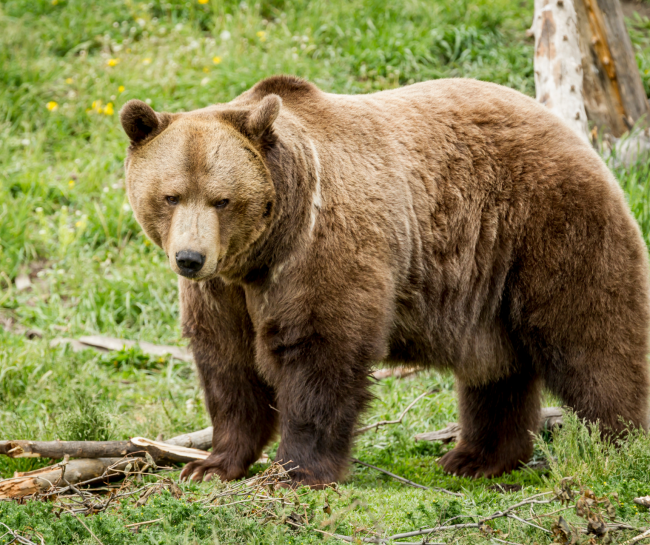
Bear encounters can be thrilling, but they are also potentially dangerous. Regardless of the species, a bear is most likely to attack if you surprise it, get between a mother and her cubs, or if it feels threatened. Here’s what you need to know and how to respond to different bear encounters
Black bears, although not typically seen as a threat to humans, can be alarming, especially when they wander into a campsite looking for food.
If a black bear comes near you, don’t run. It could trigger an attack response. Maintain a safe distance while moving slowly because sudden movements can be perceived as a threat. Make sure small children are out of sight.
To discourage the bear, try making some noise, maybe banging pots and pans together or waving your arms above your head to make yourself look bigger. Also, make sure you leave an escape route for the bear to take.
How to protect yourself against Grizzly Bear attacks?
What about Grizzly bears? Well, they will attack if surprised or threatened. They are extremely territorial and powerful creatures, so your best survival tactic is avoidance.
If you come head-to-head with a Grizzly bear, stay calm and slowly back away. Avoid direct eye contact. However, don’t turn your back on the bear either. It will likely stimulate an attack.
As for polar bears, they are always actively looking for food, so try to stay out of their way. Regardless of the species, making noise as you walk can prevent a surprise encounter. Always avoid unaccompanied bear cubs (even if they’re cute) and make yourself appear larger if a bear approaches. Never run away from an angry bear or climb a tree, as this will trigger a chase response. Carry bear spray and use it if the bear gets too close.
In the end, the best defense against bear attacks is prevention. Be aware of your surroundings, travel in groups, avoid areas where bears are likely to be resting and carry bear spray.
Bear spray is a specific type of pepper spray that can be used as a deterrent against aggressive or charging bears. It is quite similar to the personal defense pepper sprays you might carry in your purse at night.
3. How to survive mountain lion attacks
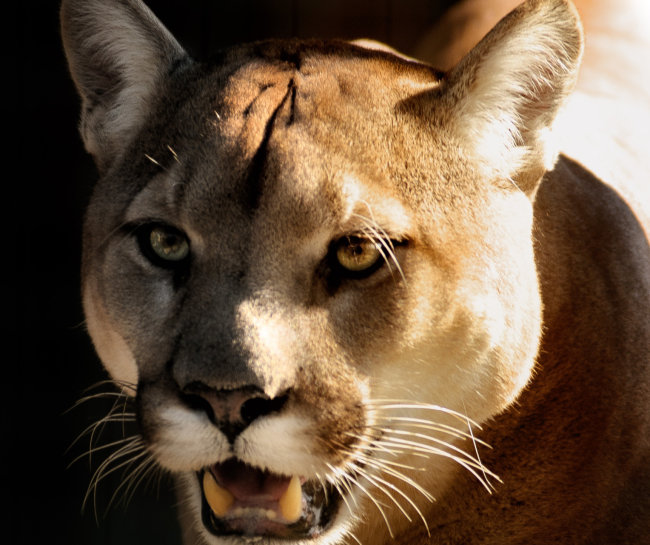
Known to be predators that will deliberately stalk their prey, mountain lions, also known as cougars or pumas might pose a serious danger if you trespass into their territory. However, it’s worth noting that attacks are extremely rare.
Nevertheless, prevention is better than anything. So, always remember to travel in groups of at least two or more since mountain lions typically avoid tackling multiple humans.
If you’re camping in an area known for its mountain lion population, follow general camp hygiene rules that are applicable to bears; this includes storing food and waste in odor-proof containers and suspending them from a tree. This helps keep curious animals away from your campsite.
But what happens if you come head-to-head with a cougar?
If you encounter one of these big bad cats, stop and stand tall. Do not run or attempt to hide. Running might trigger a predatory response from the mountain lion. Maintain eye contact, and never turn your back on the animal. This keeps the mountain lion aware that you’ve seen it and are prepared for it. Attempt to appear larger than the mountain lion. This can be achieved by opening your coat, raising your arms, or standing on your tiptoes. If you’re with a smaller companion, you could lift them onto your shoulders. If the mountain lion displays aggressive behavior, act intimidatingly: shout, wave your arms, and throw rocks or branches. Aim to land these within 2–3 feet of the lion to startle it.
If the mountain lion attacks, stay on your feet. Falling or appearing vulnerable may encourage the animal. Fight back aggressively using whatever is at hand, such as rocks, sticks, your backpack, or even a knife if you have one. Aiming for the face, especially the eyes and nose can be effective.
In all these situations, the key is to avoid panic, appear large and intimidating, and be prepared to fight back if necessary. Each encounter can be unique, so these guidelines might not apply in every situation. It’s always best to be informed about local wildlife when planning any outdoor activities.
4. How to survive an alligator’s attack
Alright, let’s chat about alligators. These big guys are kind of leftover dinosaurs and they’re hanging out all over the place in ponds, lakes, canals, rivers, swamps and bayous, with Louisiana and Florina having the largest alligator populations out there.
Alligators like to chill out in freshwater lakes and slow rivers, and they’re cool with wetlands too. Sometimes, they even kick back in slightly salty or brackish water. But don’t sweat it too much – gator run-ins are pretty uncommon. From 1948 up until 2016, there were only 383 people bitten by alligators, and sadly, 23 didn’t make it.
If you’re going to be around areas with alligators, try to avoid swimming when it’s dark out. That’s when alligators get busy. If a gator does decide to get too close, show it who’s boss. Hit, kick, or even poke it in the eyes. If you get bitten, don’t mess around – get medical help fast because those bites can get seriously infected.
Just so you know, adult male alligators are no joke. They can weigh up to 1000 pounds, have 50 to 80 super-sharp teeth, and their jaws are incredibly powerful. Still, most of the time, you can avoid a showdown by just moving away quickly. But remember, these are wild animals, not pets. Always be careful around them.
5. How to survive wild animal attacks: charging moose
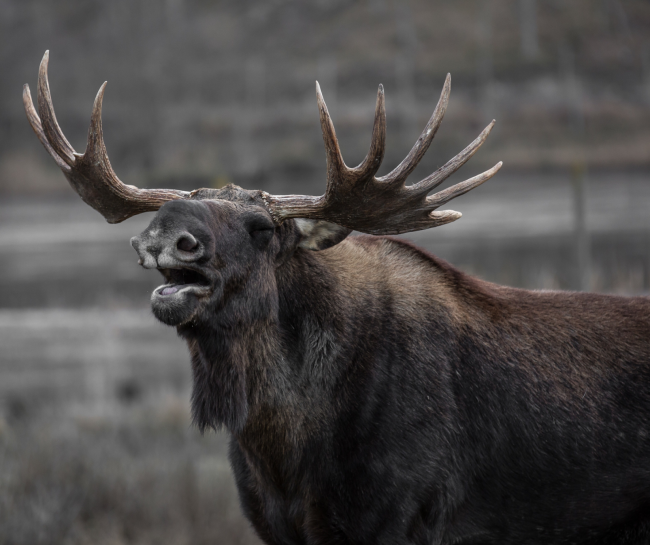
Moose may seem like docile, oversized reindeer, but they’re anything but. You’ll find these big guys in the woods up north, both in North America and Europe. They love hanging around freshwater and are often spotted on hiking and snowmobile trails.
They can be seven feet tall, weigh up to 1,800 pounds, sprint up to 30 mph, and they sport antlers that are six feet wide. If you tick them off, they’ll have no problem turning you into a human shish kebab with those antlers.
So, what should you do if you come face to face with a moose? Here are some handy tips from Kristine Rines, who’s a wildlife biologist and the Moose Project Leader at the New Hampshire Fish and Game Department.
First thing first – space is your friend! It’s simple, keep your distance from moose. If you’re on a trail and see one, don’t panic or run. Just calmly move away and let the moose pass. This holds true if you spot a moose from your car too. Slow down and drive carefully past them.
Secondly, look for the warning signs. If a moose lays its ears back, shows the whites of its eyes, raises the hair along its neck, or tips its nose up at you, take the hint. You’re too close.
How to handle the charging moose?
If a moose decides to charge at you, you’ve got two options. Either get behind or up a tree (if you can climb one), a car, a barrier, anything. You can also run from them if you are fast. They usually won’t chase you far. But if you’re knocked down, stay curled up in a ball, with your arms protecting your head, until the moose moves away.
So, keep in mind, moose aren’t just big and cuddly, they’re protective and can be dangerous, especially if they feel threatened. And if you stumble upon a mother moose and her calf, be extra cautious, that’s a super-dangerous situation.
The golden rule when dealing with moose is to respect their space. If they approach you, it’s not because they want to be friends. It’s a warning. Change your direction, and give them lots of space.
6. What to do if a Bison attacks?
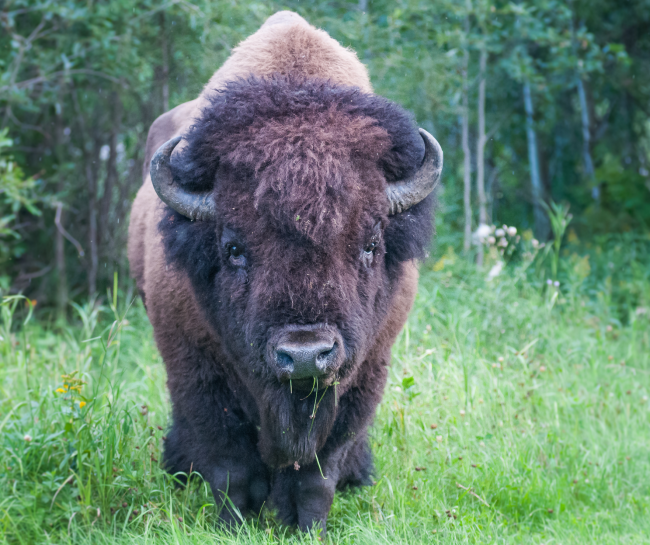
A bison is pretty much a fluffy, furry locomotive on legs. If you get too close, you could find yourself getting butted, gored, or even stomped by this massive creature. And after knocking a human down, the bison typically just wanders off to continue grazing, although there have been instances where it didn’t end there.
With this in mind, let’s go over what you should do if a bison decides to charge.
Make a dash for cover. Try to keep something large, like a tree or a car, between you and the bison. Remember, the bison’s not trying to eat you; it’s just peeved that you’re in its space.
If you’re a good climber and there’s a tree nearby that you can climb, shimmy up. Bison can’t climb trees, so you’ll be safe up there.
Last but not least, keep your distance. To avoid a charge, stay at least 100 yards away from the bison. They’re much less likely to see you as a threat if you’re not in their personal bubble.
7. How to defend yourself from snakes
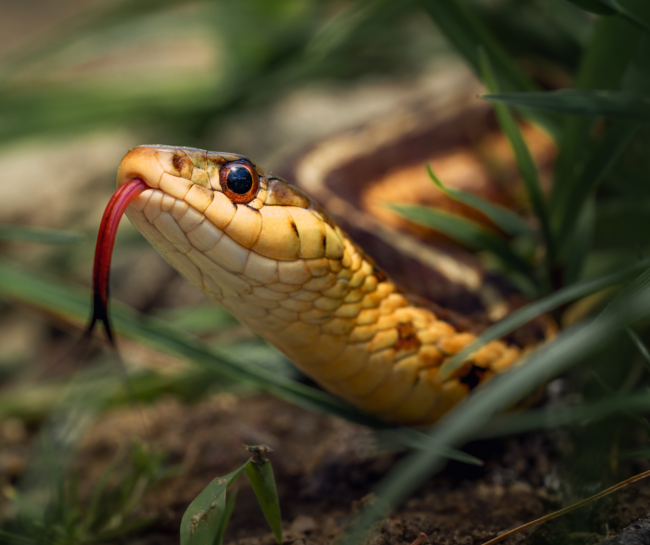
If you’re going to be in snake territory, it’s important to know how to keep yourself safe and what to do in case of a snakebite. Here’s a breakdown:
Dress well. Wearing long pants and sturdy hiking boots can prevent a snakebite from penetrating your skin.
Be cautious. If you stumble upon a snake, especially one that’s coiled up and has its head raised, tread lightly. It’s ready to strike at any moment. Don’t turn your back on it, and whatever you do, don’t run! Move away slowly and be on the lookout.
Be prepared. Always take a stick or a trekking pole with you when you hike in snake country. If a snake decides to make a move, you can use the stick to keep it at bay. Ideally, you should try to hook the stick under one of the snake’s coils and toss it away from you and your group.
Keep your cool! In the unfortunate event that you or a buddy gets bitten, remember to keep the bitten limb lower than the heart. This helps slow down the spread of the venom. Apply a compression bandage around the bitten area and hustle to the nearest hospital. Do not try to suck the venom out of the wound or cut the wound open with a knife to drain the venom. Both these strategies can end up causing more harm than good.
So, enjoy the ride, adventurer! But always remember to respect the wild and its unwritten rules. Respect the animal habitats, maintain safe distances at all times to avoid dangerous situations. Keep a clear head, and never forget these tips – they could prove invaluable one day!
